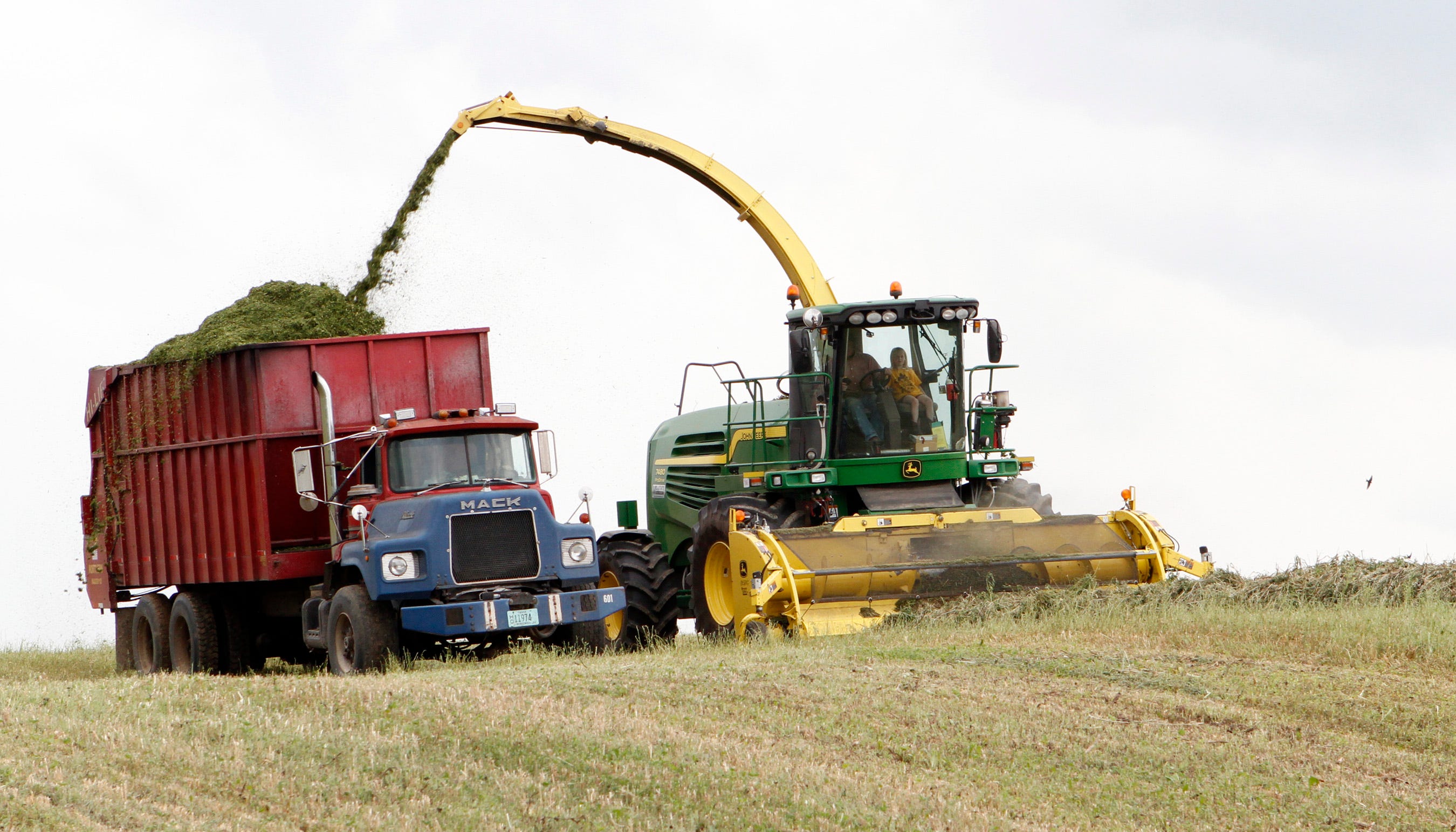2018 crop season one for the records

There's only one way to describe the 2018 crop season — challenging. The variety of severe weather events that impacted crops throughout the growing season made it a year many farmers want to put far behind them — if they could just get that last field of corn or soybeans off in some cases.
Any year where April brings a record-breaking snowstorm (April 12-15) seems doomed from the get go. The storm was the second largest snowstorm ever recorded at the National Weather Service station in Green Bay, more than doubling the previous records for largest April snowstorm and the snowiest April with an average of almost 18 inches more snow than normal, according to the USDA National Agricultural Statistics Service 2018 Wisconsin Crop Progress Review.
The deep snow and cold soils significantly delayed the start of the 2018 planting season, but above normal temperatures in May helped spring fieldwork catch up to the five-year average by the beginning of June. Still, planting progress in southern Wisconsin was slow during May as frequent rains kept fields wet. However, soils in the northern portions of the state became dry.

Then June arrived and with it severe thunderstorms cut through the state in the middle of the month, bringing much-needed rain to some and causing localized flood damage in other areas.
Crops pushed ahead of the five-year average with warm weather in late June and early July, but ongoing spotty rains left parts of northern Wisconsin unfavorably dry during the critical period for crop pollination.
As summer started to wane, Mother Nature's pressure on farmers did not as a series of severe storms from mid-August through September damaged crops in multiple areas of the state bringing heavy rain, flooding, flash flooding, hail, wind and tornadoes.
Eighteen counties in southern and central Wisconsin had emergencies declared and it took weeks for flood waters to recede as weekly rain storms kept dumping more moisture on already saturated soil. Roads and bridges washed out, disrupting rural transportation. Crops along waterways were damaged or lost. It set the stage for a difficult harvest across the state as continuing wet weather kept soil moistures high for the rest of the year.

A stretch of warm, summer-like days in September helped crops mature, but later temperatures nosedived bringing widespread frost and light snow by mid October. October and November brought continued struggles for farmers dealing with frequent precipitation, deep mud and the emergence of damp-driven molds and diseases.
As temperatures dipped below normal in mid-November, the ground froze and many farmers were finally able to access unharvested fields, but it prevented tillage. As of Nov. 25, fall tillage reached 68 percent complete, according to the USDA, a day ahead of last year, but four days behind average.
Corn
Although snow and cold delayed the beginning of corn planting this year, by late May farmers caught up with planting due to favorable weather and progress remained ahead of average through the rest of the year.
Corn condition peaked in early June, then slowly declined throughout the summer and fall. Some fields were underdeveloped due to dry conditions during pollination, yet very wet conditions drove an outbreak of tar spot disease in southern Wisconsin.

Trying to get damaged corn off the fields, farmers started silage chopping and grain harvest about a week early. Corn harvest remained ahead of normal through the fall, but rains and snow delayed field work and by Nov. 25, 88 percent of corn for grain was harvested, two days ahead of the five-year average, the USDA reported.
Soybeans
Soybean planting started in line with the five-year average with favorable weather in May and wrapped up about a week ahead. Progress stayed just ahead of average throughout the growing season with warm temperatures and sufficient rain. By early June soybean condition peaked the declined slowly through the summer and fall.
Harvest started a week ahead of average, but wet, stormy conditions immediately stalled progress and delayed soybean combining for weeks. By the end of October, progress was closer to average, but a few reports from northern Wisconsin indicated soybeans would have to be left in fields due to early snow cover.

Oats
Oats planting lagged behind the five-year average due to a lack of days suitable for fieldwork in April, with variations in planting dates similar to other crops. However, by mid-summer oat maturity was often ahead of average, according to the USDA.
Winter wheat
Winter wheat condition lagged behind the previous year and didn't change much as plants dealt with April's snow storms. Warmer weather in May improved winter wheat condition and it remained above 80 percent good to excellent through the end of July. Maturity trended slightly behind average for much of the season, but favorable weather put harvest activity about a week ahead.
Winter wheat planting started off slightly ahead of average, but delays to soybean harvest slowed that progress.

Alfalfa
The heavy snow in April helped keep alfalfa and other hay stands well insulated. keeping winter freeze damage low.
The first, second and third cutting of hay stayed in line with the five-year average. When it came to fourth crop, dry conditions in northern Wisconsin helped producers, while wet fields in southern Wisconsin made haying difficult and very wet conditions dragged progress down during the fall. Some farmers were able to get a fourth crop of hay while waiting to get on soybean fields, but others said the fields were too muddy.